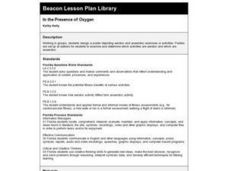Curated OER
Bocce Ball Unit - Tournament (Lesson 7)
This is one part (lesson 7) of the unit on Bocce ball. There are links on this page to get you to the entire unit. This`lesson sets up a tournament of eight teams. You may have to divide your class into a different number of teams. Take...
National First Ladies' Library
Let's Make a World Series Almanac
Middle schoolers discuss the meaning of the word, almanac and then decide which statistics about the World Series they think should be included in the almanac, browsing some websites to get some idea of what statistics are available....
PEGAMES.org
Lava Field
Working in teams, groups of learners must collaborate to make their way across an imaginary lava field using foam tiles, carpet pieces, hula hoops, etc. This activity would be best if adapted to a larger facility or outdoors!
Curated OER
EGG-Cercise Relays: Spring Fun Day
Students take part in a fun holiday circuit training activity that promotes good sportsmanship and encourages students to challenge themselves using a variety of throwing and catching tasks.
Curated OER
Art Transitions: Morphs
Students identify artistic expression by participating in a morph activity. In this art analysis instructional activity, students identify the work of Keith Haring and examine some of his flip books. Students practice creating...
Curated OER
Small Space Big Track
Students jog for exercise in a gym. In this jogging lesson, students follow a pattern in the gym to practice running in a small space while pacing themselves.
Curated OER
Undokai - Japanese Games
Students are introduced to several traditional Japanese sports and games. Students organize an 'Undokai' - a sports day in which they compete in teams.
Curated OER
In the Presence of Oxygen
Third graders, in groups, classify different activities as aerobic or anaerobic. They create posters displaying their categorizations and then take notes on each other's posters.
Curated OER
Aboriginal Physical Education
Students engage in p.e. activities that have roots in native Indian, Metis, and Inuit cultures. They practice the skill involved and listen to the significance behind the skill. They read relevant books and define new terminology.








